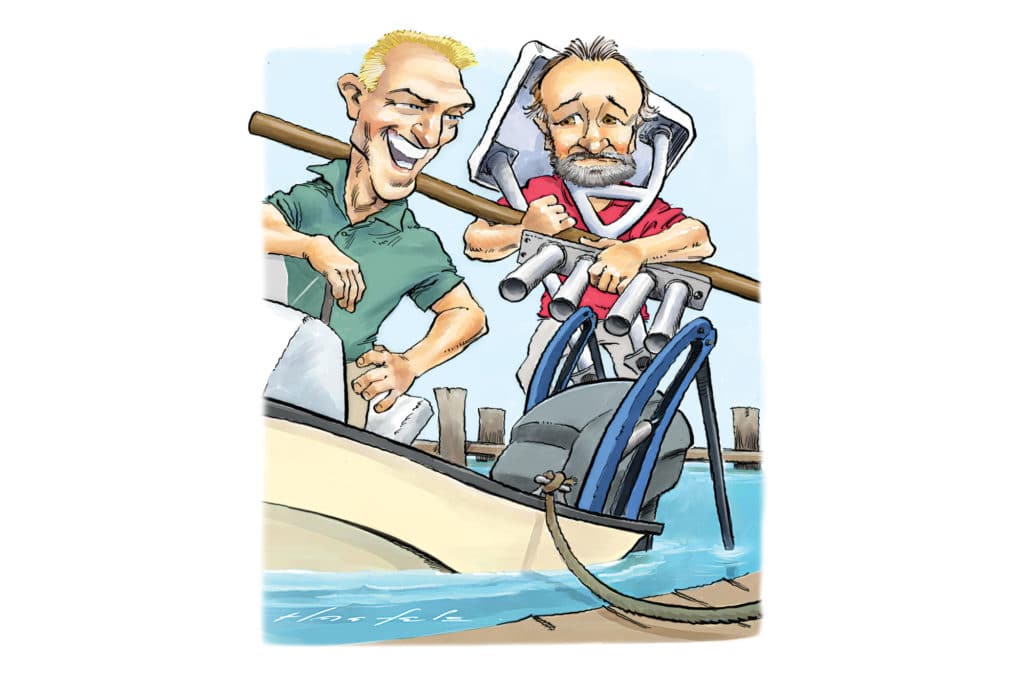
Recently, I was sharing images of my days flinging flies in the Florida Keys with my pal Ted. “I’ve given it up. Skiff fishing is too much work,” I explained.
Ted seemed confused. “Work on a boat? How’s that?” he asked.
“Balancing on a doormat-size platform while pushing a skiff around with a pole for eight hours is work,” I said.
By Friday, Ted owned a flats skiff, which was odd given that, until then, his only interest in fish had been as a protein source. He has a place in the Keys and has owned a fleet of other boats, but he’d never shown an interest in flats skiffs.
Perhaps I’d gotten a bit carried away waxing about the adventure and whining about the workout. Unlike me, Ted is physically fit and under the influence of a personal trainer and a dietitian who counts his calories and carbs. Ted has just two vices: boats and exercise. Perhaps his new skiff would serve as a floating NordicTrack.
It’s also possible that I was partly to blame for his purchase. I called a dealer pal on his behalf. I also sent the listing to Ted for the boat that he bought and advised him to insist on a sea trial. “Twenty-one by 8-foot-6 is a lot to push around,” I warned. “And check the draft!”
He texted back to let me know it was too late for such questions. “I already own it,” he said. “Let’s go see what I bought tomorrow.”
When I arrived, Ted’s skiff was nestled on a custom aluminum trailer, and he was already aboard poking about with the salesman in tow.
“That’s the largest motor I’ve ever seen on a skiff,” I offered cautiously.
“This 300 hp unit is the best motor they build,” Ted advised. He had three of them on one of his favorite rides.
The salesman offered support. “You’re gonna need that muscle,” he said. “All up with fuel and four, it weighs in at 4,000 pounds. It’s a beast. You’ll see 60-plus miles per hour with the jack plate and trim dialed in.”
“Where’s the platform and the push pole?” I asked.
“That’s old-school,” the salesman said. “A trolling motor on the bow will network to your 12-inch chart plotter, and two Power-Poles on the transom will hold you in place, all push-button. You don’t even need an anchor.”
“All that stuff would muck up its lines. And get rid of these things,” Ted instructed as he fiddled with the rod holders.
The salesman winced but kept taking notes.
“Coyle, what color Bimini, boot stripe and bottom paint would you recommend, and where shall I put the autopilot?” Ted asked.
I explained that such features were sacrilege on a flats skiff.
“So?” Ted answered, mulling over the potential of his fish-free vision.
Ted has cruised up to Maine and over to the Mediterranean, but he’s never explored the backcountry in his own backyard. He is already charting his first adventure, and I admit that I’m a bit jealous. If he gets flabby sitting at the helm pushing buttons, he’s convinced that no shortage of lazy boaters will buy in.
It’s almost as if he’s outfitting the boat for me.









